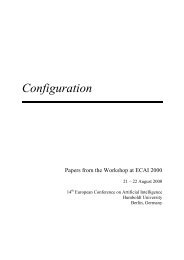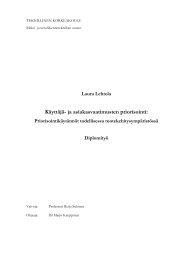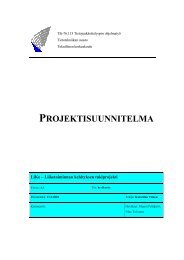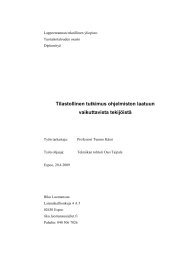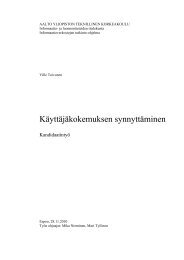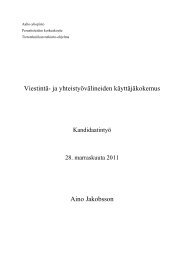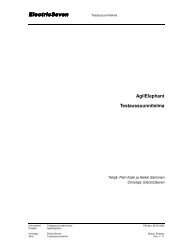An Introduction to BPEL standard and its extentions - SoberIT
An Introduction to BPEL standard and its extentions - SoberIT
An Introduction to BPEL standard and its extentions - SoberIT
You also want an ePaper? Increase the reach of your titles
YUMPU automatically turns print PDFs into web optimized ePapers that Google loves.
ParentProcessCall...partnerLink=”PL”requestOperation= “op1”responseOperation= “op2”Op1Sub-ProcessOp2PT2PLPT1Figure 4.2: Receive-invoke invocation mechanisms [15]The parent process uses call activity <strong>to</strong> call sub-process. The call activity specifies the port type which isused <strong>to</strong> send the input message <strong>to</strong> sub-process <strong>and</strong> port type which contains the operation <strong>to</strong> be used bysub-process <strong>to</strong> return a message. Several parent processes can call same sub-process, which means subprocessneeds <strong>to</strong> return message <strong>to</strong> different endpoints. Therefore it is important that those endpoints inparent processes are recognizable by the process engine hosting sub-process, so that response messagecan be sent back successfully [15].4.5 Coordination scenariosThere are seven coordination scenarios between a parent process <strong>and</strong> a sub-process (Figure 4.3)[15]Parent processRequest operationResponse operationCloseCloseSub-processFigure 4.3a Invocation of sub-process without compensationSub-process is invoked <strong>and</strong> message is returned. After parent process is completed, sub-process is closed.



